Not too far from the usual pictures of Kashmir in the media, a different world quietly breathes in the lanes of Srinagar. This world isn’t jostling for space in headlines and prime time debates. It is here that I met the Muslim and Kashmiri Pandit caretakers of the city’s Hindu temples.
If you stand on the Aali Kadal bridge over the lazy Jhelum, you will see a Sufi shrine and a Hindu temple facing each other. The green roof of the Khanqah-e-Moula and the golden top Rama Koul Temple perfectly complement one another. Kashmir was a part of several empires, each leaving their own mark.
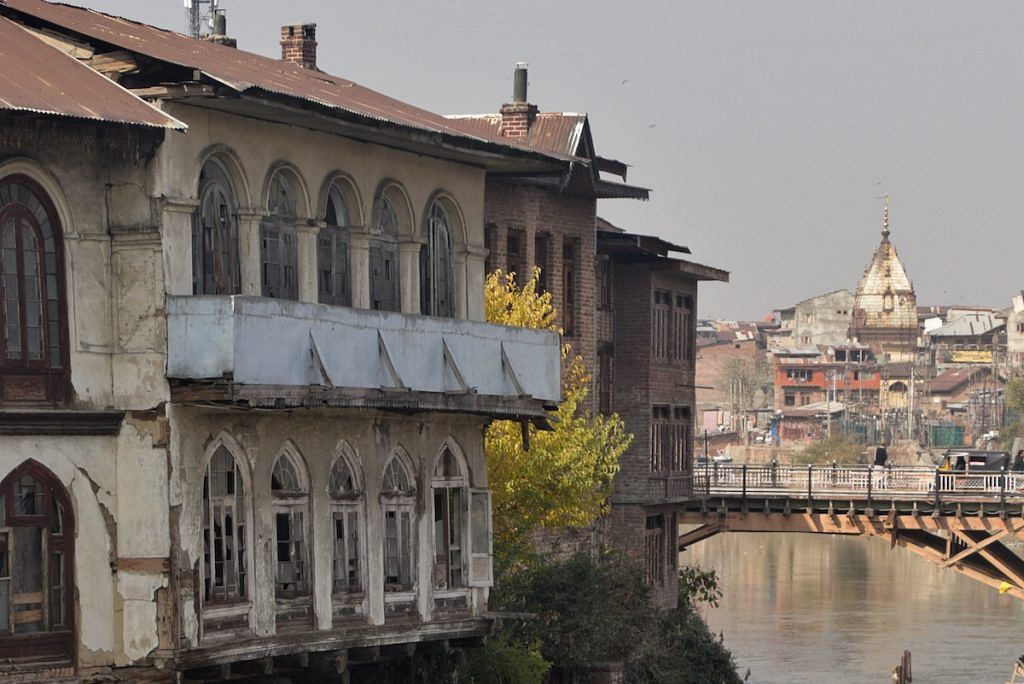
Both Muslim and Kashmiri Pandit communities have faced hardships and pain, owing to state hegemony and oppression. Be it cow vigilantism and social exclusion of Muslims during the Sikh rule or the 1990 turmoil. The people of the two communities, however, have also been known to share a cooperative and affable relationship. Khalid Bashir Ahmad in his book, Kashmir: Unravelling the myth behind the narrative, mentions how Kashmiri Muslims gave shelter to Kashmiri Pandits to save them from attacks, provided them with ration and bid tearful goodbyes.
Nothing better describes this friendship than the story of Irfan Ahmed and the Rama Koul Temple in Srinagar’s old city. I meet Irfan and his father one winter morning in the temple’s compound – which looks more like a warehouse. The temple stands adjacent to the historic Budshah tomb, where the graves of Zayn al-Abidin – the eighth Sultan of Kashmir – and his mother lie. The Rama Koul Temple is about 60 years old. The temple has been abandoned since 1990 – when the exodus happened. Three generations of Irfan’s family have been taking care of the temple ever since. They consider it their duty.
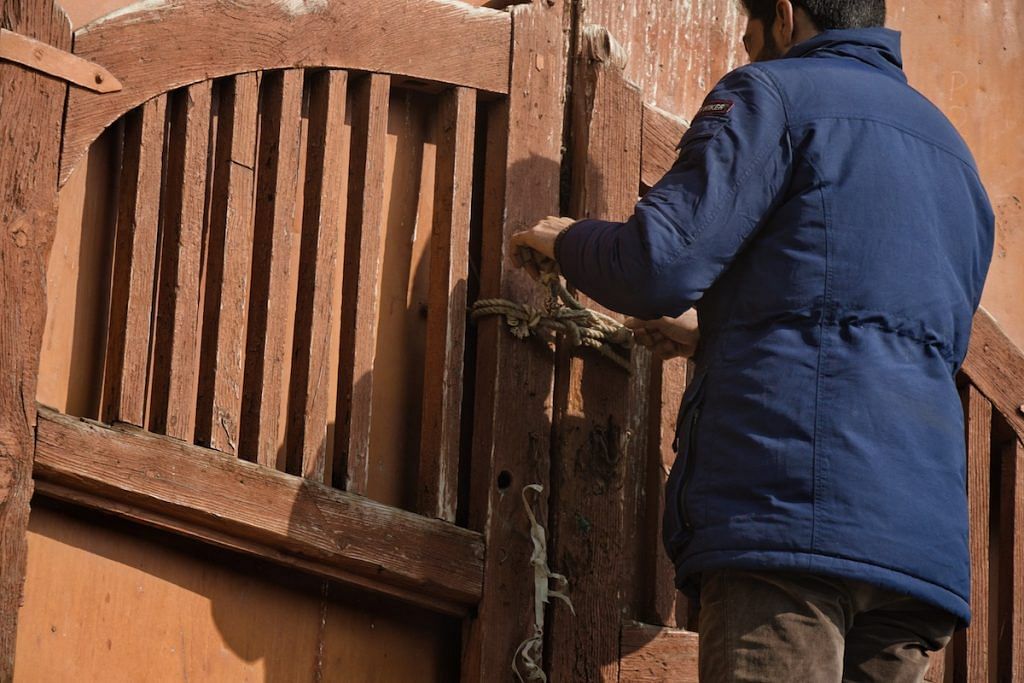
Also read: Tears, tea & a gift of almonds: How a Kashmiri Pandit was welcomed back in the Valley
In 1992, when the Babri Masjid-Ram Janmabhoomi violence engulfed north India, it reached Kashmir too. A few young boys came with hockey sticks to destroy the Rama Koul Temple. Again, in 2002, angered by the injustice faced by Muslims in Gujarat, young boys wanted to take revenge by destroying the temple that stood thousands of kilometres away from the Gujarat riots. On both these occasions, Irfan’s mother guarded the temple.
When the group of young boys approached the gates of the temple, both times, Irfan’s father tried to stop them, but in vain. Once they reached the stairs of the main temple, they found a determined old lady sitting there — she didn’t flinch. They were from the same locality as her. Probably out of respect and familiarity, the boys left and did not vandalise the temple.
According to Irfan, even a grenade was once hurled at the temple. The family now keeps the doors of the temple locked at all times. They constructed a wall around the temple premises, shutting the back door permanently.
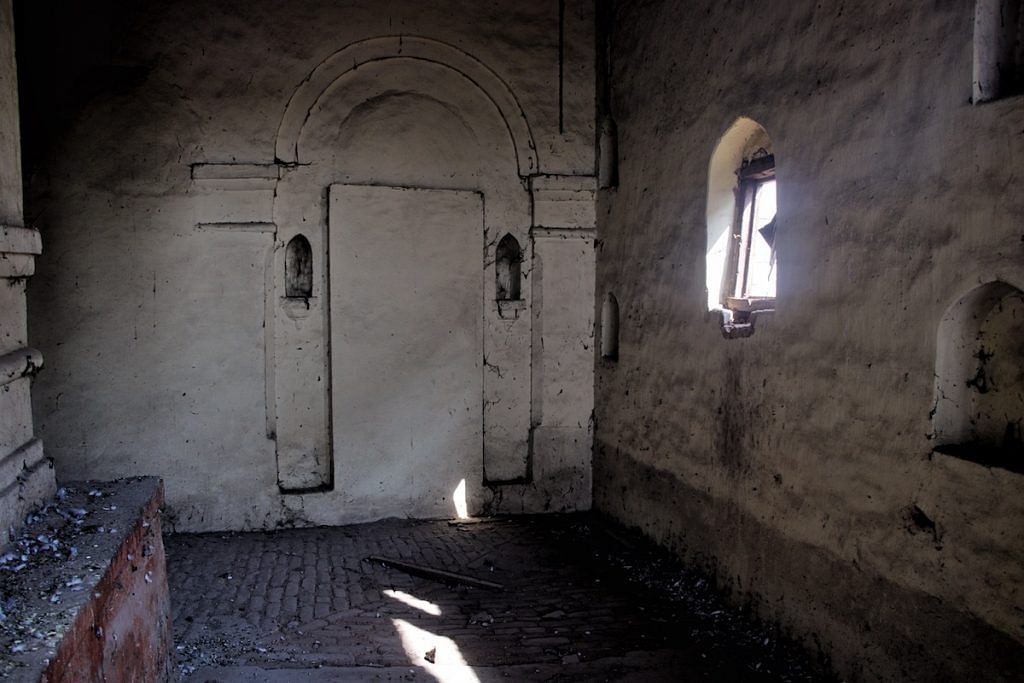
“The temple comes under the jurisdiction Dharmarth Trust, but you know how things are, we hardly receive any maintenance funds from them,” says Irfan as he shows me around the temple. There are two gates to the main temple, one shut tightly with a thick white rope and the other locked. While Irfan unties the rope, I don’t miss the chance to click a photo of the moment.
“What about this door?” I ask Irfan about a smaller room inside the temple. “It has three idols. I can’t tell you the names because I don’t recognise them. I don’t have the keys to this, the Trust does,” he says. The door was last unlocked almost 30 years ago. Are the idols inside yearning for worshippers, I wonder.
“We have Kashmiri Pandit friends outside the state. If something were to happen to this temple what am I supposed to tell them? This is their heritage, and we shall take care of it at all times,” says a proud Irfan.
Also read: A temple, a Kashmiri Pandit family in Pulwama’s Muslim-majority village and a story of hope
Both the father and the son long for their Kashmiri Pandit friends to return, so that they can all sit together on the banks of Jhelum again and recall the good times.
Unlike the Rama Koul Temple, the Batayar Temple in Aali Kadal area is still functional and caters to only one devotee, Ramesh Koul, the sole visitor and also the temple priest. A school teacher by profession, Ramesh Koul did not leave Kashmir during the 1991 exodus, he couldn’t. Kashmir was where he was born, where he lived his entire life. Koul lost his parents when he was a teenager and was brought up by his grandparents.
Walking down the lanes of Aali Kadal, I ask a kandur (Kashmiri baker) about the whereabouts of Ramesh Koul. He calls out for Koul from his shop. Ramesh Koul peeped out of a small window of a centuries-old brick mortar house. He was apprehensive.
“I have been living here since my childhood days, and never have I felt threatened or as a stranger. Yes, there are moments when I resist socialising due to fear and paranoia, but those are just momentary feelings,” he says.
He finally comes down with a bunch of keys and opens the temple right opposite his house. The Batayar Temple is well-maintained and receives donations from Kashmiri Pandits living outside the state. But in the neighbourhood, it is the Muslims who take care of it, attend to it and makes sure it is standing.
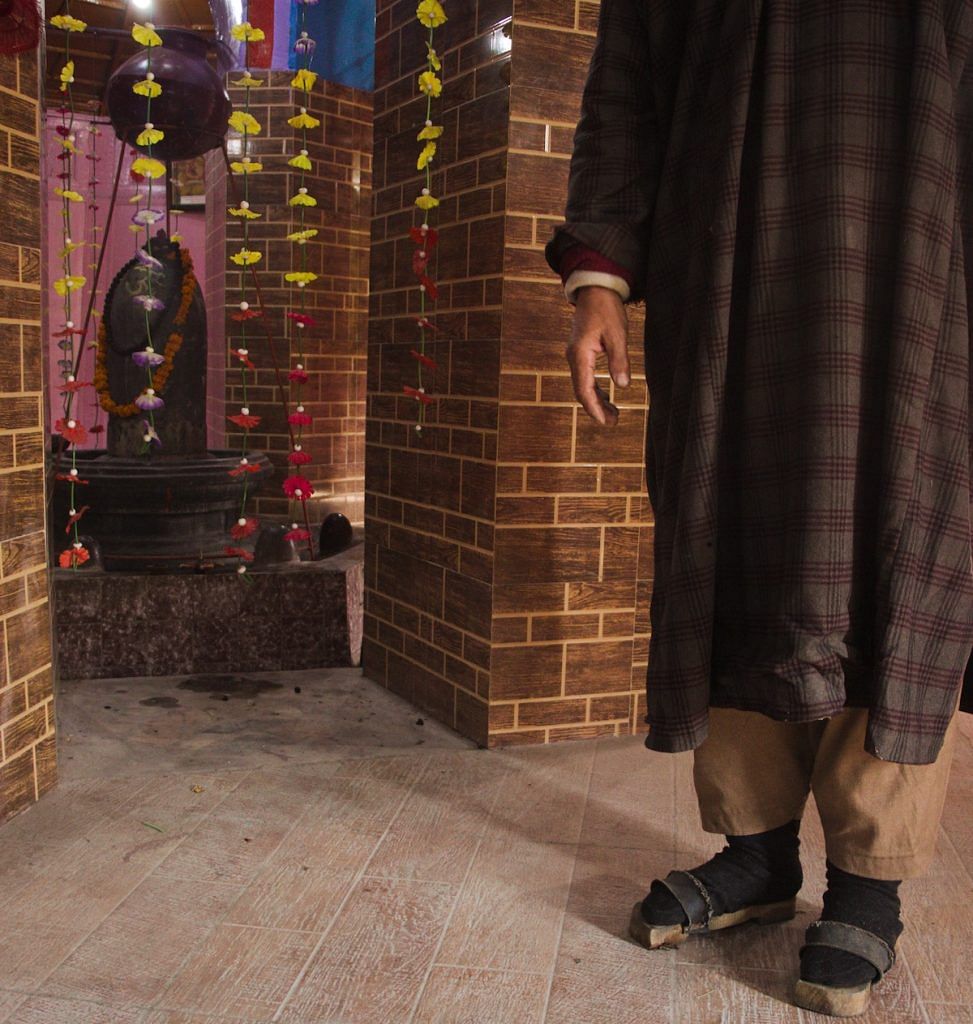
“I have been visiting this temple since childhood, the only difference being, at that time we had many visitors and now it is just me. I come once in the morning and once in the evening to light the diya. My bhagwan is my everything,” says Koul in a soft voice.
Also read: Snow leopards, Scotsmen, Kashmiri harmony and a footballing fairy-tale in the Valley
A burqa-clad woman and her two daughters enter the temple as Koul and I speak. He asks them to sit in the corner. Intrigued, I asked him about this rather unusual sight. “Girls, boys, men, women, everybody comes to me for healing. I give them counselling session and few medicines to tackle their depression, anxiety problems and other such issues,” he says. Ramesh Koul is a faith healer and all his visitors are Muslims.
As we are about to leave the temple, Koul tells me of another temple two blocks away. “Do you wish to visit Rishi Peer’s temple? I have the keys. Again, I’m the sole visitor to that temple as well.”
A grand chinar tree awaits us in the premises of Rishi Peer’s temple. The entire area is silent, not a person in sight. We enter the temple, the interior structure resembling my mother’s ancestral house.
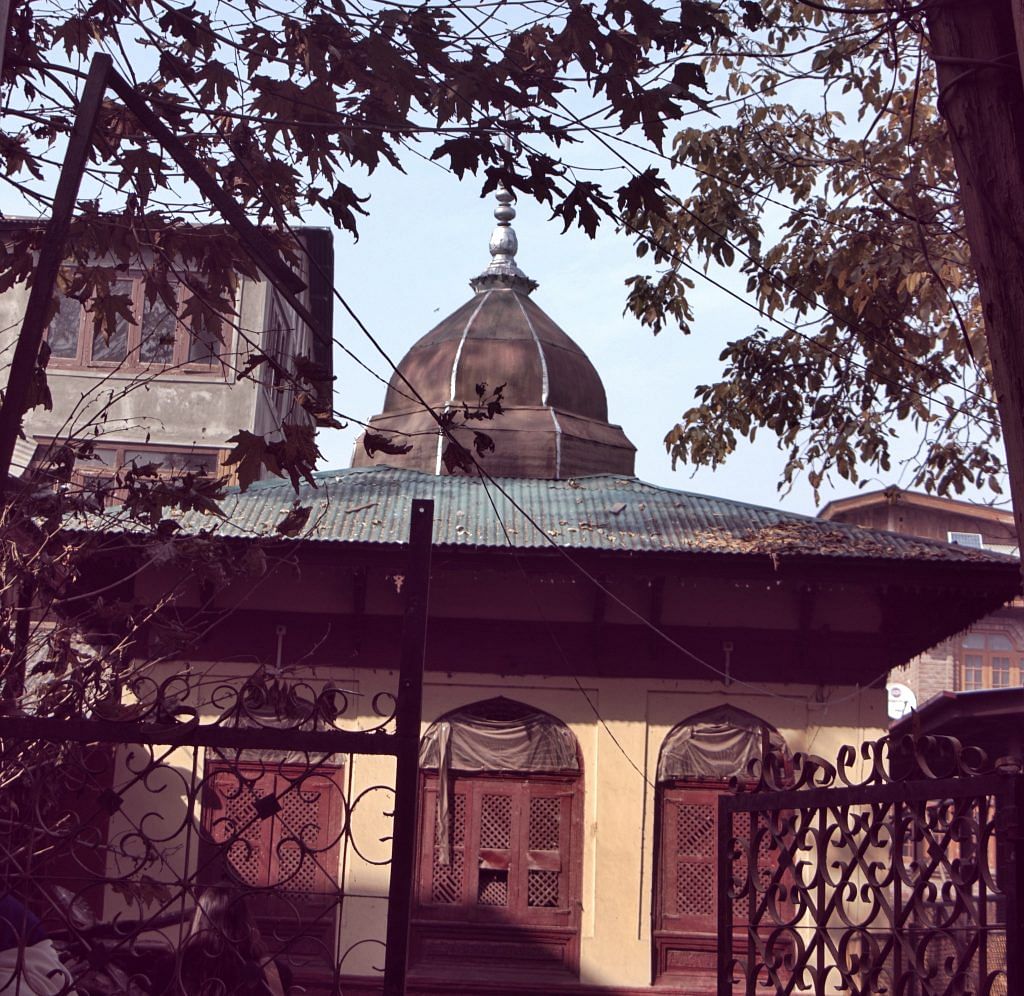
This temple is a bit different. It does not have an idol, it has a photo of Rishi Peer, a Kashmiri saint from around the 17th century. It is dimly lit and my head reaches the ceiling. I find old photos framed and kept in the temple. The photos are of Kashmiri Pandit families. More than a temple, it is the memory keeper of a community.
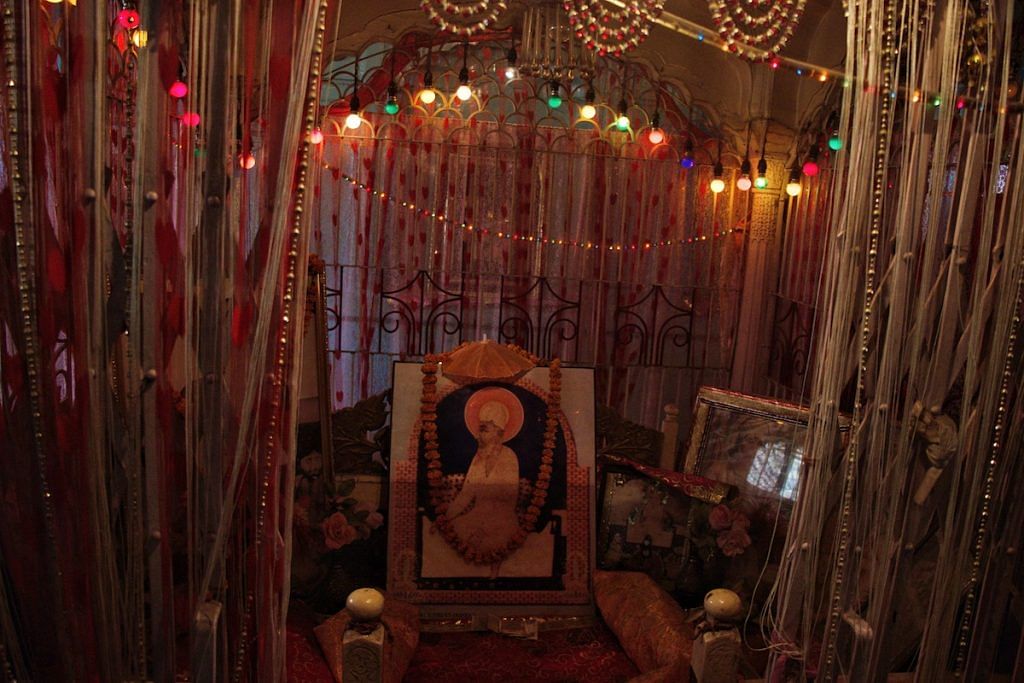
He gives me a handful of dry fruits and some blessings before I leave.
As I walk down the road, a shopkeeper asks me: “What are you doing here, beta? Are you chronicling the temples or the houses of our Kashmiri Pandit brothers?”
“Yes, I am. Do you have anything to share?”
“What should I? Those were some good old days.”
Standing beside a vegetable vendor, overlooking the Jhelum, I realise that old city Srinagar is a cradle of Kashmir’s history, empires and resistance. And yet, no one comes knocking.
The author is a freelance photographer and a social activist based in Kashmir. Views are personal.


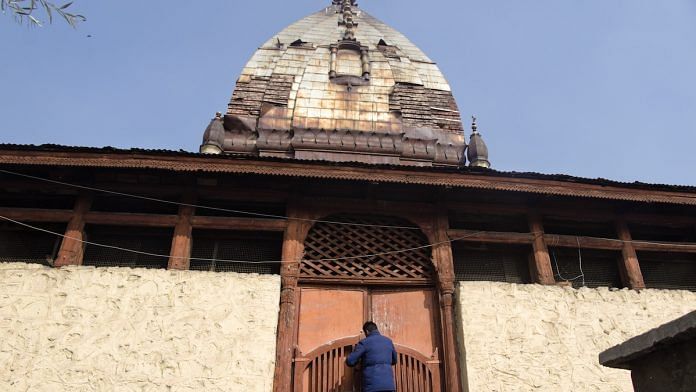

Today the 14th of September we commemorate as Balidan Divas, the day of Sacrifice. Today, in 1989, a few moments after paying a crying neighbor muslim kid five rupees, Triloki nath Tapiloo, the public leader and advocate was gunned down in Srinagar,
His killers wished him and then shot him, His killing was perhaps the most humane killing, later killings were brutal and horrific beyond description. This inaugurated a targeted brutal killing of recorded 937 kashmiri pandits. Kashmiri Pandit was no threat, he was killed just because he was kafir.
FIR was lodged in 380 murders but not a single conviction. And the shameless top court, instead of taking cognizance, refused to take up the matter. Shame on The Indian National Congress and Local politicians to have participated in murder and rape by ommission. The will go the Rajiv Gandhi way,
And those who were silent witnesses to the brutality will face worse.
I am sure of the culprits will pay with their blood and tears because, nature is ruthless in payback, and it will pay them back in time of her choice.
Criminal will behave as a criminal, but society is how non criminals behave.
Nice article
Very sad to hear that the govts of Kashmir were blind to happening behind their backyard and good to see some families are taking care of the temple.. Pandits are driven out and Muslims are taking care of the temple. What a scenario?
So beautiful stories.. I am so happy and delighted to know that humans like them exist. I send my prayers and wish them courage all the way .
Article deserveswidest circulation.Cental Govt, Armed forces and Jammu kashmir Govt should also circulate.
So, after expelling them by force and not allowing them to return, the Muslims are taking care of their temples. Are we supposed to be amused?
Yes, we are supposed to be amused at the fact that the pundits were expelled or the coward and spineless pundits just ran away and did not make a stand and fight. Besides, where was the brave Indian army? It could not protect the citizens against few terrorists. What hope do we have for the beloved Bharat Mata?